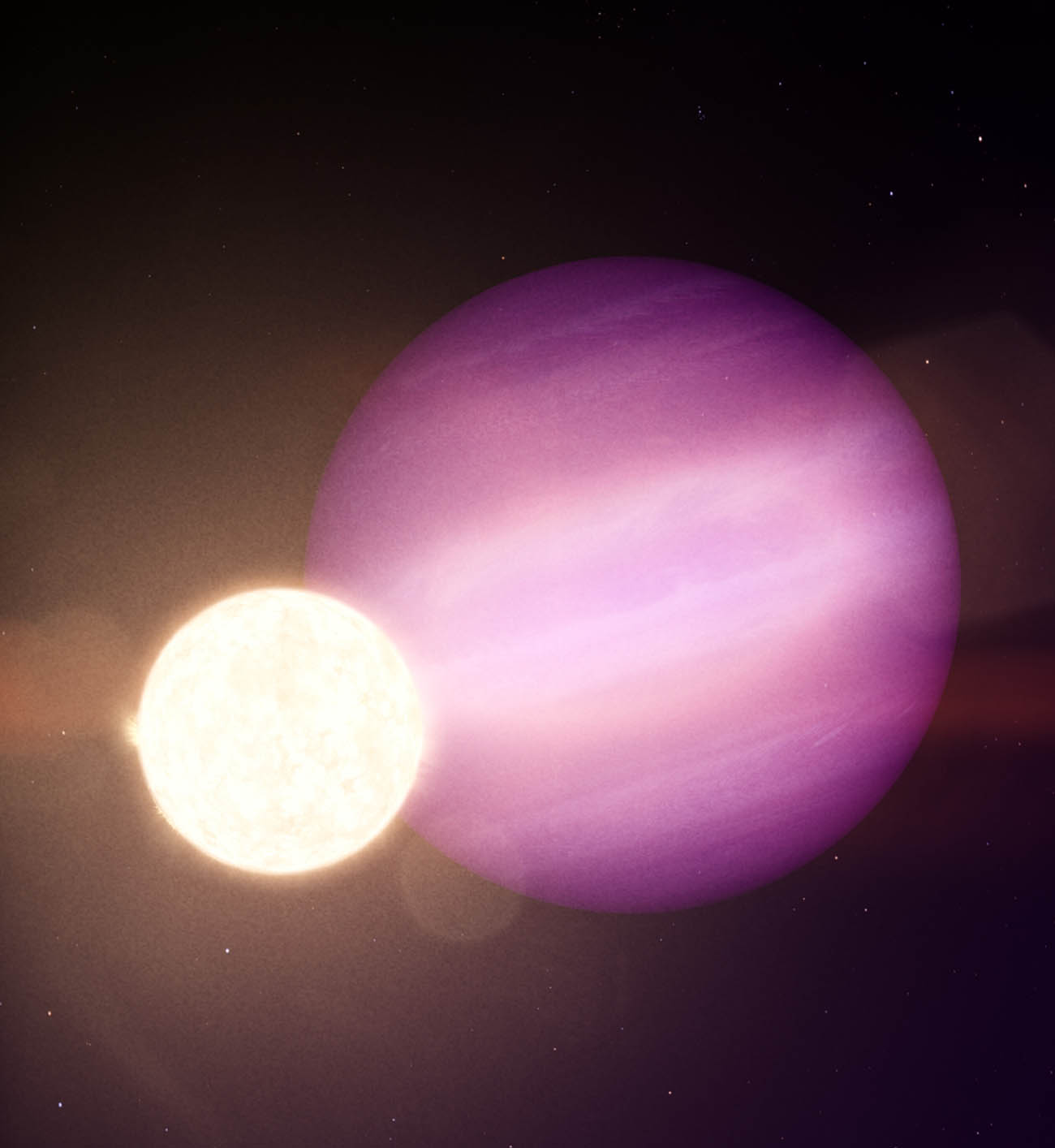NOIRLab: A White Dwarf’s Surprise Planetary Companion

In this illustration, WD 1856b, a giant planet, orbits its dim white dwarf star every day and a half. Credit: NASA’s Goddard Space Flight Center
Astronomers detect first-of-its-kind exoplanet around dead star
For the first time, an intact, giant exoplanet has been discovered orbiting close to a white dwarf star. This discovery shows that it is possible for Jupiter-sized planets to survive their star’s demise and settle into close orbits around the remaining stellar ember, near the habitable zone. This foretells one possible future for our own Solar System when the Sun ages into a white dwarf.
Astronomers have used the international Gemini Observatory, a Program of NSF’s NOIRLab, and other telescopes around the globe and in space to find and characterize a giant planet, less than 13.8 times as massive as Jupiter [1], orbiting a white dwarf star [2][3]. The research is published in the journal Nature.
This is the first example of an intact giant planet orbiting close to a white dwarf star — in this case a particularly cool and dim stellar ember known as WD 1856+534. “The discovery came as something of a surprise,” according to lead author Andrew Vanderburg, assistant professor at the University of Wisconsin-Madison. “A previous example of a similar system, where an object was seen to pass in front of a white dwarf, showed only a debris field from a disintegrating asteroid.” [4]
After detecting the planet with the TESS satellite, which observed it transiting its white dwarf star, the team took advantage of the tremendous light-collecting power of Gemini North’s 8.1-meter mirror and used the sensitive Gemini Near-Infrared Spectrograph (GNIRS) to make detailed measurements of the white dwarf star in infrared light from Maunakea, Hawai‘i. The spectroscopic observations captured the unique fingerprint of the star, but not that of the planet or any debris surrounding this system [5][6]. “Because no debris from the planet was detected floating on the star’s surface or surrounding it in a disk we could infer that the planet is intact,” said Siyi Xu, an assistant astronomer at Gemini Observatory and one of the researchers behind the discovery.
Read more on the NOIRLab website
